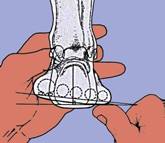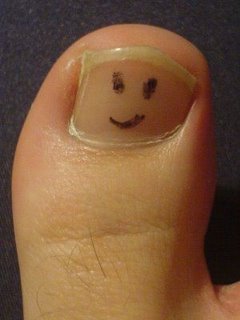Written by Dr. Shawn Allen
This is our very last gait guys blog post. Yes, all good things come to an end, even this trusted blog.
But, keeping in good faith, we will finish on a strong note ……. One of gardenia and lavender. Thanks for the last 5 years gait brethren, is has been a great ride. Shawn and Ivo
_______________________________
The technical title of this blog post should have been, “The reactive influence of non-normopressure bowel distention and spontaneous high vapor dissipation on bipedal locomotion.” but no one but true gait nerds would have read it had we stuck with this pubmed-type title. Yes, we are talking about farts and gait here today folks, buckle up.
One biomechanical principle we will link to this entity of “off-gassing“ is that excessive or sustained ankle plantarflexion could inhibit dorsiflexion and certainly, at the very least, works against it. We have talked about this often here on the blog and how the lack of ample ankle dorsiflexion can impair many of the biomechanical events higher up into the human frame. So, how can someone’s bowel gas translate into gait problems ?
Think about this … to squeeze out a right “cheek sneak” (fart) with optimal crowd pleasing pitch and peak vibrato, some elevation and relaxation of the lower and middle gluteus maximus divisions (coccygeal and sacral) seems imperative to optimally control off-gassing . Seemingly, to do this, a significant degree of right ankle plantarflexion may be necessary to lift the right hemipelvis driving a subsequent intentional clockwise pelvic distortion assisting in the relaxation of these gluteal divisions. This consciously driven right side of the body “lift” via the right ankle plantarflexion can also be met and assisted via ipsitlateral abdominal and contralateral gluteus medius contraction to further enable the optimal right hemipelvis elevation. Go ahead, stand up and mimic the posture and note these biomechanical pieces. Recall our mantra,
“when the foot is on the ground, the glutes are in charge, when the foot is in the air, the abdominals are in charge”.
These coordinated motor patterns might be considered dual/multi tasking. This honed series of biomechanical events is one often perfected in frat houses and basement gaming rooms. But make no mistake, there is a biomechanical danger lurking here if this becomes a habitual compensation pattern, one common in large volume legume consumers (beware vegans). Habituation of this motor task, or demonstrating poor technique over time can render right quadratus lumborum shortening and weak lower abdominals rendering an anterior pelvic tilt. This tilt may lead to gluteal inhibition/weakness (because it is difficult to contract the gluteals in an anterior pelvic tilt, go ahead stand up again and try it) which over time can impair stance phase gait mechanics. However, relating to the off-gassing, this physical posturing might optimize low frequency gluteal vibrations that can optimize vibrato during gas dissipation if pressurization is in fact optimal for an “audible”. It is important to note that conscious variable control of the tonus of the muscular anal sphincter complex plays a big part in the pitch and vibrato. There is always a drawback it seems, it does truly come down to motor control it seems, doesn’t it always ?
This is not to say that avoiding “audibles” through holding “one” in doesn’t have consequences. The exotic gas (nitrogen, carbon dioxide, hydrogen, methane, oxygen) induced gut distention that could only make your collage roommate proud can inhibit the abdominal wall and thus the lower thoracic canister and disable normal breathing mechanics. This could be a serious complication to the coupled events of respiration and thoracic mobility. So, holding that big one in for your friends rather than engaging the compensatory Trendeleburg-type off-gassing posture as described above is also fraught with problems. We know that functional disconnection of the thoracic canister from the pelvic core can disrupt the normal anti-phasic mechanics of the contralateral upper and lower limbs as well as possibly impair the normal spinal cord mediated central pattern generators.
Farts…..Call them what you want, those ear pleasing, nose hair curling, trouser coughs that only a teenage boy can truly relish and recognize as a function of boyhood success. All joking aside, they truly should be your biggest concern in your gait analysis evaluation, bar none. Ask your patients about their bowels and off-gassing, it should be part of your clinical history intake. Maybe even consider taking out the discomfort of open dialogue, and put it on your intake forms. We found that a stick figure diagram in a good biomechanical squat posture with a mushroom cloud formation hanging overhead eases dialogue tension about this sensitive topic. We even give the young children crayons to they can color the cloud. What fun !
Dare us to write a part two on this topic. “Blue Angels” (unfamilar with this clinical phenomenon? look it up). Go ahead, dare us for a part 2.
By now, if you haven’t realized that The Gait Guys just punked you, then you likely haven’t had your cup of morning coffee. Yes, we have no clue what we were talking about on this blog post, well, ok maybe, after all we do have that y-chromosome. Yes, we are NOT ending the blog either :)
Are you now considering us juvenile ? Ok maybe we are a little, but don’t deny it, you thought about some unique and honest body biomechanics for a moment here and it is these mental gymnastics that will take your creative thinking about gait to the next level. If you are upset, so be it. There will be no apologies here in this growing PC world. Off-gassing is a human thing, we all do it. We have been writing serious stuff daily for 5 years here on The Gait Guys. It was time for us to write something a little lighter. We can only hope that you will think of us and the complexities of the gait cycle the next time you sneak one out while having dinner at the in-laws. Try not to giggle when you do, but for certain, think about your body mechanics when you do, we can’t be responsible for off-gassing injuries. Think of us.
Shawn Allen, remaining here, for the duration.
disclaimer: we cannot be responsible for injuries that might be sustained by improper off-gassing events. We also do not recommend attempts at performing Blue Angels, this is a potentially dangerous activity and could cause great bodily harm (seriously). :)





























